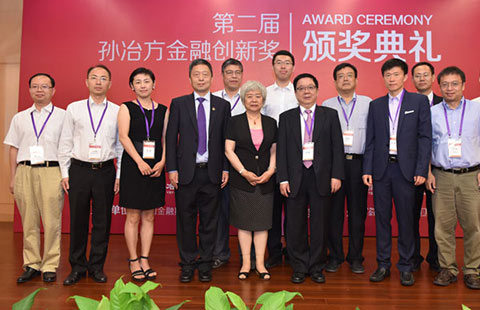Bringing innovation and business together
By Cheng Yingqi (China Daily) Updated: 2012-12-03 01:04Huang Weiguang, vice-president of the newly established Shanghai Advanced Research Institute, understands the "fragile" connection between scientist and businessman.
"In the past, when researchers made a breakthrough, their major concern was how to apply for research funds for government-sponsored projects, or how to win a prize. And they were certainly more anxious about publishing a SCI paper than applying the technology to products," Huang said.
Science Citation Index is a citation index published by Thomson Reuters, which covers 6,400 of the world’s leading journals of science and technology.
Huang has been a researcher at CAS’ Institute of Engineering Thermophysics since the 1990s and has had more than 30 papers published in international journals and won prizes granted by CAS.
"Now our goal is, that when a researcher has a new idea, the first thought in his or her mind is: which company will be interested? Rather than how to persuade the review committee of a government project," he said.
By the end of November, the institute had raised 740 million yuan ($118.7 million) for scientific research, 40 percent of the funds were from the business sector.
However, Pan Jiaofeng, deputy secretary-general of CAS, said the institutes should also give consideration to the demands of the nation.
"The establishment of the new institutes starts with the nation’s strategic layout," Pan said.
|
 |
|
A staff member shows how to use an intelligent lamp developed by the Shenzhen Institutes of Advanced Technology at a fair in Shenzhen, Guangdong province, in November. The lamp can project onto a desk and turn it into a touch screen. [Photo by JIAN JIE / FOR CHINA DAILY] |
The Suzhou Institute of Biomedical Engineering and Technology, focuses its research on high-end medical equipment.
"Currently, 90 percent of high-end medical equipment is imported from outside China, which contributes to the high medical expenses.
"The reason we established the new institute in Suzhou is that the region traditionally has supporting industries, so we connect the national strategy for sci-tech research with local capacity," he said.
"Our geographical distribution of sci-tech resources does not match with economic development in some regions, so we combine local demands with the national sci-tech strategy, and try to adapt our research to economic development," Pan added.
Similarly, the Tianjin Institute of Industrial Biotechnology received a warm welcome from local companies. Since the start of its construction in 2008, the institute has established eight joint laboratories with local enterprises, such as the King-york Group and China Oil & Foodstuffs Corp.
"During its construction, the institute received 30 percent of its research funding from local companies, which reflects that the scientific research it conducts is closely connected with the demands of local enterprises," said Bai Chunli, CAS president.
"The development of industrial biotechnology is crucial for industrial upgrading, as well as the revolution of the people’s lifestyle, so I hope the institute plays a larger role in enhancing the development of industrial biotechnology in Tianjin, and in the whole country."
Besides the three newly established institutes, at least two more institutes, the Chongqing Institute of Green and Intelligent Technology and the Haixi Institutes of Chinese Academy of Sciences, are in the process of being established.
- Sun Yefang Foundation wants more global study of China's financial sector
- President Xi urges unswerving efforts to deepen SOE reform
- Fun at high-tech indoor theme park
- State Grid to buy 23% stake in Brazil's CPFL for $1.8 billion
- Belt and Road initiative brings new opportunities for China-EU cooperation
- China service sector growth expands slightly in June
- Vanke takeover battle highlights market regulation defects
- Sanhua focuses on cooling and heating systems manufacturing


















